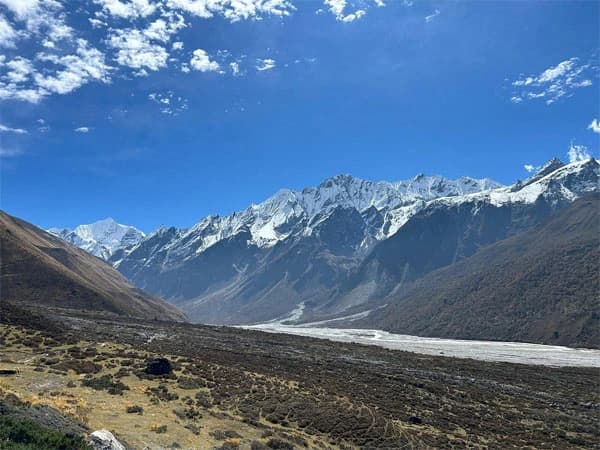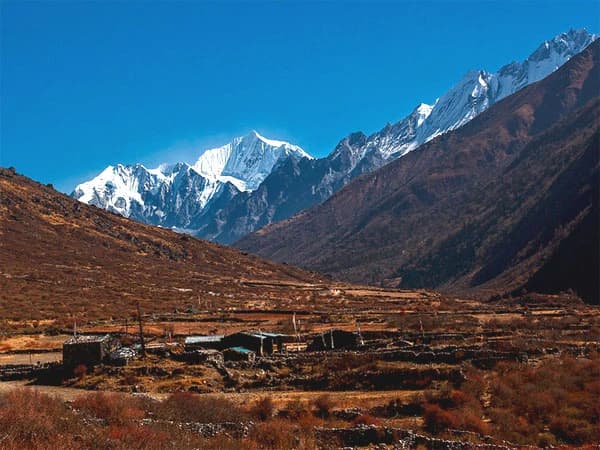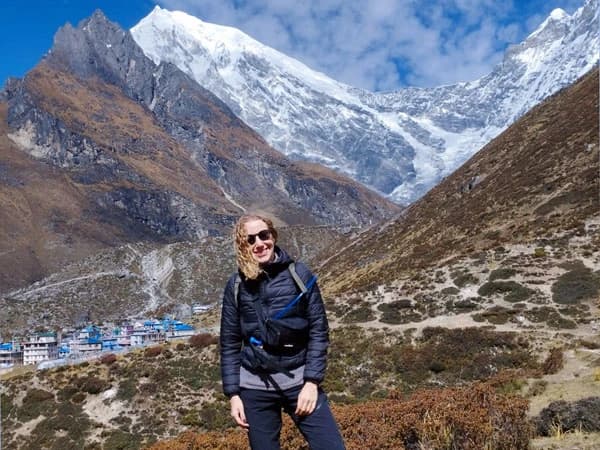Understanding the Annapurna Circuit Trek
The Annapurna Circuit Trek is one of the most amazingly beautiful and popular treks in Nepal. In fact, it is a real treat among mountain lovers, not just among Nepali but among tourists as well. This trekking covers a distance of about 230 kilometers, making a circle of the fascinating Annapurna Range for five weeks. Placed along the way, there are glimpses of peaks such as Annapurna I, Dhaulagiri, and Machapuchare. The trek cuts across a topography that changes from subtropical forests to mountain fields and high mountain deserts. Starting from the plush valleys of Besishahar, it concludes in Pokhara and covers about 230 kilometers.
The altitudes throughout this trek change greatly, with the highest point being Thorong La Pass, which reaches a height of 5,416 meters. This simply means that trekkers have to face drastic changes in temperature and oxygen levels. Because of such altitude levels, a trekker becomes very prone to altitude sickness or simply fatigue. The trekkers are required to walk for a long period. It has tiring days when one needs to be very fit both physically and mentally.
The trekking route forks leftward and commands breathtaking panoramic views of the surrounding landscape. It is particularly at viewpoints like Poon Hill, from where one can see the sunrise over the Himalayas. You will also be able to experience the different cultures that the inhabitants of this part of the world possess through various traditional villages. You will be taken on a tour through Manang and Muktinath. The popular Annapurna Circuit contains diverse landscapes and cultural experiences with great views that draw the attention of many people who love adventure worldwide.

Quick Overview: The Four Trekking Seasons in Annapurna
The Annapurna Circuit offers a different experience depending on the season in which you go trekking. The best time for trekking this season falls between February and May during the Spring. It normally has mild temperatures and clear trails. You will see some beautiful flowers in bloom and active wildlife. However, this is a popular time when you expect more trekkers on this route.
Autumn is considered the best season to trek from September to early December. The weather is usually good, and the trails are stable with clear blue skies. The mountains after the monsoon rains are really spectacular to see. Trails may be busy, but it is the ideal time for a safe and enjoyable hike.
The winter season is characterized by cold temperatures from December to February, especially at high altitudes. The trails are quiet, and the views are crisp, though the conditions can be harsh. Heavy snowfall and below-zero temperatures often make the trek difficult. It is especially for inexperienced trekkers. The Thorung La Pass might also close due to extreme weather.
The monsoon season, starting from June to August, has heavy rainfall, slippery trails, and a higher risk of landslides. The trails are muddy, and visibility could be improved. This is the least ideal time for trekking in Annapurna.
We can sum up all the ideal conditions for trekking during the autumn season. Springtime is also a great choice if you love to see the beauty of blooming flowers. So, choose wisely based on preference and trekking experience.
Spring (March to May): Why Spring is a favorite for the Annapurna Circuit
Spring is one of the peak seasons for the Annapurna Circuit trek. The spring provides ideal weather for trekking. The temperatures are mild enough to walk easily for many hours. The skies are usually clear, with the early spring months being absolutely perfect. It offers great all-around views of the Annapurna mountain range.
Spring season is the best when nature is in full burst of color it brings to the trail's landscape. Rhododendron flowers are in full bloom across hillsides against the dazzling green backdrop. The fresh greenery and a combination of blooming flowers will make the trail alive and inviting. Mountain views from this part of Nepal are striking, too: crisp panoramas of peaks like Annapurna and Dhaulagiri against clear skies.
Spring has many advantages for trekkers since the weather is moderate. Neither the biting cold of winter nor the heavy rains of the monsoon provide bother. The trails are in good condition because they make each day's journey more enjoyable. It does have its downsides, as most trails get really crowded. It is especially in April, where haze sometimes obscures mountain views as the season wears on.
All in all, spring is excellent for trekkers who want neither extreme nor moderate weather with vibrant color landscapes. If you are searching for clear skies and vibrant natural scenery, spring is an excellent time for your Annapurna adventure.
Summer/Monsoon (June to Early September): Trekking the Circuit in Monsoon Season
Trekking the Annapurna Circuit is challenging from June through early September. But the adventure is quite rewarding for some. Heavy rainfall, high humidity, and lush greenery mark the weather conditions during these months. Rain turns the landscape into a fresh green wonderland. The fresh plants are in full bloom, and the waterfalls flow down the hillsides.
One of the high points of monsoon trekking is the peaceful environment. Fewer trekkers mean that you will most of the time have the trails to yourself. It is when you’re experiencing a serene and almost private experience. In the quiet season, accommodations are quite cheaper than in peak seasons. The typical crowds may be avoided. There is a refreshing atmosphere, with endless turnouts revealing dense greenery and the sound of rushing waterfalls.
However, the rainy season makes trails slippery and muddy, enhancing the risk of falls. Additionally, leeches are very common in certain areas. The thick clouds often hide the mountain views. This means one is likely to miss out on viewing the peaks clearly. During the monsoon season, it would be suitable for trekking with patience and proper gear like waterproof boots and rain covers.
It is the best season for advanced, adventurous trekkers who can handle really unpredictable conditions and do not mind getting wet. If one is in search of an alternative route with more dry conditions, then one may consider areas such as the Upper Mustang, which are considered 'rain shadow' because most of the rain falls on the mountains.
Autumn: Best Season for Clear Views and Pleasant Weather
The best time to trek around the Annapurna Circuit is during the autumn season, from the last weeks of September up to November. During this period, the weather is normally at its finest. The mild temperatures, clear blue skies, and minimal rain make it a favorite among trekkers worldwide.
During autumn, you will enjoy pleasant days and cool nights, which are perfect for ideal trekking. The air will be crisp, and the mountains will stand against the clear blue sky. They offer breathtaking panoramic views that are often unobstructed.
One of the season's highlights is the lively energy on the trails. The Annapurna Circuit is one of the busiest trekking trails where you can enjoy the beauty of autumn. Dashain and Tihar are Nepal’s most famous festivals, which fall during this season. These festivals offer a special chance to experience local culture, with villages full of colorful decorations, traditional music, and joyful celebrations.
The weather is perfect for trekking. You can easily go on long trails with no rain or extreme cold. The downside of the optimal weather is that the trails are very crowded, and tea houses are fully booked. Prices for accommodations are higher than usual. Sometimes, you may also have to pre-book a spot in advance.
Despite all the crowds, it is the best season for those who want to see crystal-clear mountain views. The excellent weather offers a taste of Nepali culture. It's a brilliant choice if you are ready to share the trails and experience the Annapurna Circuit at its finest.

Winter: Annapurna Circuit in Winter
The winter season trek generally starts from December to February in the Annapurna Circuit. It offers an ideal adventure for those who want solitude and a quieter trek. During these months, the region's weather in the high altitudes is cold and receives a lot of snow. This would translate to fewer trekkers. You’ll enjoy a peaceful journey without the crowds on the trails or at the teahouses. The scenery changes into stunning views of snow-covered trails and mountains.
One of the major highlights of trekking in winter is the serene scenery. Snow makes the trails quiet, and each step brings you closer to pristine views that remain untouched. The tea houses are also less crowded, with more personal space and quietness.
Winter trekking in Nepal has its challenges. The temperature in the Annapurna region at night is quite low, especially at high altitudes. One needs to pack accordingly, bringing sufficient warm clothes and other accessories. There is a risk of snow on higher passes, such as Thorung La Pass, which may be closed due to heavy snowfall. The winter conditions are harsh on the trails and require definite preparation and updates regarding weather conditions.
On the other hand, winter trekking is ideal for professional trekkers who have experience in colder climates and who aren't afraid of an added level of difficulty. For those who seek solitude, it offers a peaceful and unforgettable experience of the Annapurna. Just make sure to go ahead of time, check trail conditions, and bring appropriate gear to stay warm and safe.
Best Time for Solo Trekkers vs. Guided Treks
The best time for solo trekkers to trek can differ from those on guided treks. Solo trekkers usually prefer peak seasons like autumn or spring. This is when the weather is usually clear, with the trails that are pretty easy to trace. These seasons have pleasant temperatures and fewer risks on the trail. Solo trekkers usually face obstacles during the winter and monsoon seasons. There is a high amount of risk involved due to snow, freezing temperatures, and slippery routes.
If you want a safe option, it is highly advisable to take guides or porters who can provide immense assistance during this time of the year. They can ensure safety while helping assess difficult terrain. On the other hand, group trekkers have the guide's expertise in managing such conditions. This especially holds during the cold winter season or even during the heavy rainfall during the monsoon season.
Comparing the Seasons: Pros and Cons of Each Season for Different Types of Trekkers
Trekking in Nepal differs for each time of the year. Spring runs from March to May, and you will see rhododendrons in bloom with moderate temperatures. This season is when trekkers prefer clear skies with vibrant colors. However, the trails can be busier than one may prefer. Spring is great for the weather that isn't extremely hot or cold, but it may also feel crowded.
This includes summer, which brings the monsoon rains from June to August and makes the trails muddy and slippery. It is much quieter and has fewer tourists. This is a good season for experienced trekkers who do not mind the rain and especially enjoy the lush landscapes. Some parts of the country (like Mustang) stay dry during this season. It’s a good option for anyone looking to avoid wet weather.
September to November is the peak season. The weather is crisp and clear, with fantastic visibility of the mountains. Beginners and casual trekkers appreciate the comfortable temperatures and good weather, but crowds and prices are accordingly high.
Winter starts from December to February, and it offers peaceful trails and clear skies. At higher altitudes, temperatures can drop significantly. Experienced trekkers who don’t mind the cold often enjoy this solitude. For beginners, winter can feel too chilly even though the lower-elevation treks are still manageable.
Each season has its pros and cons. But when rightly planned, every trekker can find his season that may appeal to his comfort and experience level of desired crowds or solitude.
Special Considerations for Choosing the Right Time to Trek
You must consider your fitness and experience level when selecting the best time for the Annapurna Circuit Trek. If you are a beginner or not used to high altitudes, spring or autumn would be an ideal option, with a comfortable atmosphere due to mild weather. If you are an experienced trekker willing to take on a challenge, winter could be a possibility, with rough conditions.
Crowds are another factor to consider. The peak crowds in the Annapurna Circuit fall in the spring season. These two seasons are considered the best in trekking conditions and are also popular with trekkers. Places like Manang and Thorung La Pass crowd up during this time. For those trekkers who want a less crowded trek, winter or early spring would be best with the trade-off of the much harsher weather.
Weather and safety go hand in hand. Spring and autumn have clear skies and gentle temperatures, with minimal risk of snow or rain. Winter is extremely cold, and during the monsoon season from June to August, trekking can only be dangerous due to slippery trails and heavy rainfall. One must understand how every season can affect trail conditions and safety.
But trekking in Nepal has a certain flavor of festivals like Dashain and Tihar. If you happen to trek at this time, you catch glimpses of the local celebrations. Hence, you can add a deeper cultural insight to your journey.
Finally, the number of permits and access is seasonal. During the high trekking seasons, more permits are available. During other periods, places are less accessible and hardly give permits. Regulations may vary over time, so check locally and plan accordingly.
Preparing for Your Trek: Essential Tips and Gear for All Seasons
Essential things to bring on the Annapurna Circuit Trek vary greatly by the season, so prepare accordingly. Here are some of the most important advice and lists of equipment that you would need throughout the year:
Clothing:
Light, breathable, quick-drying clothes will be needed for day treks in spring and autumn. Bring warm layers for nights. Even in spring and autumn, there are considerable drops in temperature at altitude. For winter, add extra warm gear, such as a down jacket and thermal layers. Summer includes the monsoon, and rain gear, along with a lightweight rain jacket, should be discussed.
Good trekking boots that are comfortable and adequate in their sturdiness to take on varying trail conditions in most seasons. Crampons for winter sections with ice and a waterproof cover for the backpack to keep gear dry during summer. Trekking poles when the paths are uneven can help with balance in spring and autumn.
Medical Supplies:
Bring a simple first-aid kit for all seasons. It includes blister treatment, pain relievers, and personal medications. Add more hand warmers for winter. Stay hydrated, and always take water purification tablets for safety, especially during summer when fewer water sources are secure.
Snacks:
Energy bars, dried fruits, and trail mix are good for any season. However, in winter, take calorie-heavy snacks that will keep your energy high against the cold. In summer, bring extra snacks that will keep you nourished throughout the longer days on the trail.
Flexibility:
Weather can suddenly change, so it is always good to stay flexible about your schedule. You may have to change your plans to avoid being out in bad weather or rest if you are not feeling well.
Safety Tips:
Also, it is good to hire a guide who values safety and local knowledge. Further, remember to take your permits with you. Finally, health precautions should be taken by acclimatizing properly to avoid altitude sickness.

Conclusion: Finding Your Perfect Season for the Annapurna Circuit
The best season for the Annapurna Circuit Trek depends on your preference. If you are looking for fine weather with crystal skies, autumn is the best season for you. But from September to December, it is pretty crowded. During spring, the temperatures are moderate, and flowers show a fantastic face, but you can expect more crowds from February to May.
If quiet trails are what you are after, you can go for a winter trekking adventure. The winter will provide some beautiful views and peace. However, it is a little challenging to endure the snow and freezing temperatures. Summer months start in June and continue until August, makes it comparatively quieter trails, which include rain and slippery trails.
Choose your season, which can be based on clear views, fewer people, or nature in its full beauty. Whatever time of year you do this trip, be adequately prepared for it. Bring the proper equipment with you to be flexible. Make sure your safety is your priority. If you are well prepared, then the Annapurna Circuit trek is an unforgettable adventure.








